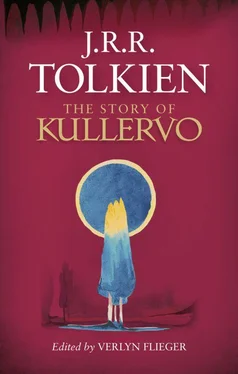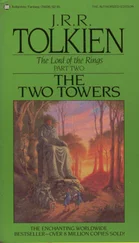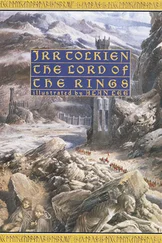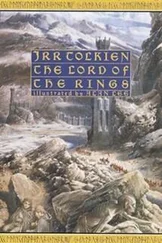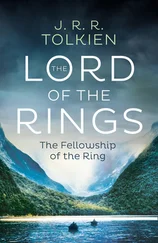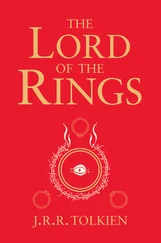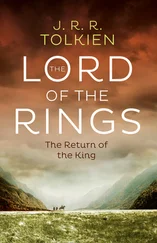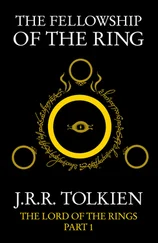It is any case to all that body of myth of queer troglodyte story, of wild jugglings with the sun and moon and the origins of the earth and the shapes of Man that in Homer (for instance) has properly been pruned away: it is to this that the Kalevala may be compared, not to the larger grandeur of the epic theme. Or again it is to the quaint tales, the outrageous ghosts, the sorceries and by-tracks of human imagination and belief that crop out here and there in the usually intensely clear air of the sagas that the ‘L of H’ can be likened, not to the haughty dignity and courage, the nobility of which the greater sagas tell.
But the queer and strange, the unrestrained, the grotesque is not only interesting: it is valuable. It is not always necessary to purge it out altogether in order to attain to the Sublime. You can have your gargoyles on your noble cathedral, but Europe has lost much through too often trying to build Greek Temples.
We have here then a collection of mythological ballads full of that very primitive undergrowth that the litterature of Europe has on the whole been cutting away and reducing for centuries with different and earlier completeness in different peoples. Such a collection would no doubt be the despoil of anthropologists who might luxuriate here awhile. Commentators I know make many notes to their translations, saying ‘Compare this story with the one told in the Andaman Isles’ or ‘Compare that belief with the one shown in the Hausa Folktales’ and so forth: but let us avoid this. It after all only proves that Finns and Andaman Islanders are nearly related animals (which we knew before). Therefore let us rather rejoice that we have come suddenly upon a storehouse of those popular imaginings which we had feared lost, stocked with stories as yet not sophisticated into a sense of proportion; with no thought of the decent limits even of exaggeration, with no sense, or rather not our sense, of the incongruous (except where we suspect incongruity is delighted in). We are taking a holiday from the whole course of progress of the last three Millenniums: and going to be wildly unhellenic and barbarous for a time, like the boy who hoped the future life would provide for half holidays in Hell, away from Eton collars and hymns.
The glorious exaggerations of these ballads, by way of illustration, recall the method of story telling in the Mabinogion, but really their cases are rather different. In the K[alevala] there is no attempt at plausibility, no cunning concealment of the impossible; merely the child’s delight in saying how he has cut down a million trees and slaughtered twenty policemen: which has no thought to take you in but is a primitive hero-story. Of course in the Mab[inogion] there is the same delight in a good story, in a strong swap of imagination but the picture has more technique: its colours are marvellously schemed, its figures grouped. It is not so with L. of H. If a man kills a gigantic elk in one line it may be a she-bear in the next. To elaborate this is unnecessary: but it might be made the occasion of an attempt to say just what I find the atmosphere of the Kalevala to be: which you can correct from your own knowledge, or from the extracts which I would wish to read until your patience was exhausted and you felt the appropriateness of the last remarks of the Kalevala.
‘Een the waterfall when flowing /yields no endless stream of water./ Nor does an accomplished singer /sing till all his knowledge fail him.’
What I feel is — that there is no background of litt[erary] tradition. The M[abinogion] has such a background: a feeling of a great amount of devel[opment] which has resulted in a field of the most excellently harmonised and subtly varied colours against which the figures of the actors of the stories stand out; but they also harmonize with the marvellous surrounding colour-scheme and lose in startlingness if not in clearness. Most similar national legend litt[erature] has something of it. The Kalevala to me feels to have none. The colours, the deeds, the marvels, and the figures of the heroes are all splashed onto a clean bare canvas by a sudden hand: even the legends concerning the origins of the most ancient things seem to come fresh from the singer’s hot imagination of the moment. There are no ultra modernities like trams or guns or aeroplanes in it: the heroes’ weapons it is true are the so-called ‘antique’ bow and spear or sword but at the same time there is a ‘nowness’, a quite unhazy unromantic momentariness and presentness that quite startles you, especially when you discover that you are reading all the time of the earth being made out of a teal’s egg or the sun and moon being shut up in a mountain.
II
As to what is known of the origin of the Kalevala: ever since the coming of Väinämöinenand his making of the great harp, his Kantele fashioned of pike-bone, from what we know of the Finns they have always been fond of ballads; and those ballads have been handed on and sung day after day with unending zest from father to son and son to grandson down to the present day when, as the ballads now bewail: ‘The songs are songs of bygone ages/ hidden words of ancient wisdom/, songs which all the children sing not/ all beyond men’s comprehension/ in these ages of unfortune/ when the race is near its ending.’ The Shadow of Sweden and then of Russia has been over the country for many centuries. Petrograd is in Finland. But the remarkable and delightful thing is that these ‘songs of bygone ages’ have not been tinkered with.
Sweden finally in [the] 12th cent[ury] conq[uered] Finland (after contin. warfare combined with some intercourse that stretches back beyond the beg[inning] of our era in which too our own ancestors in Holstein had a good part). Christianity then began slowly to be introduced — in other words the Finns were one of the last acknowledged pagan peoples in Med[ieval] Eur[ope]. The Ka[levala] today is pract[ically] untouched: and except at the end and in a few references to Ukko God of Heaven even hints at the existence of Christianity are almost entirely absent. These largely account for its interest and ‘undergrowth’ character, though also for its minor emot[ional] key: its narrow and parochial view (things in themselves not without delight).
For another seven cen[turies] the ballads were handed on in spite of Sweden, in spite of Russia and were not written down until Elias Lönnrot in 1835 made a selectionof them. These were all collected in Eastern Finland and are consequently in a dialect diff[erent] to that of modern litterary Finnish. This dial[ect] has become a kind of poetic convention. Lönnrot was not the only collector, but it was to him that it occurred to string a selection into loosely connected form — as it would seem from the result with no small skill. He called it the Land of Heroes, Kalevala from Kaleva the mythological ancestor of all the heroes. It consisted of twenty-five Runos (or Cantos): this was enlarged with new collected material to double, and published again in 1849, and almost immediately appeared in translation in other lang[uages].
It is interesting to realize however that this ballad-singing, nevertheless, still goes on: that those ballads here by chance crystallized for us are capable of and still undergo a thousand variations. The Kalevala, too, is by no means all the ballad litt[erature] of Finland and is not even the whole of the collected ballads even of Lönnrot, who published as well a whole volume of them under the name ‘Kanteletar’ or the ‘Daughter of the Harp’. The Kalevala is only different in this that it is connected and so more readable, and covers most of the field of Finnish mythology from the Genesis of Earth and Sky to the depart[ure] of Väinämöinen. The lateness of its collection is apt to make those with a prob[ably] unwholesome modern thirst for the ‘authentically primitive’ feel doubtful. It is however very likely the real reason why the treasure house remained unrifled: it was not redecorated or upholstered, whitewashed or otherwise spoilt: it was left to the care of chance; to the genius of the fire-side and escaped the pedant and the instructive person.
Читать дальше
